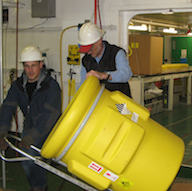
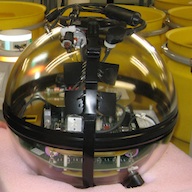
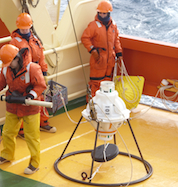
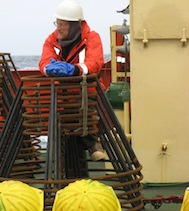
CPIES
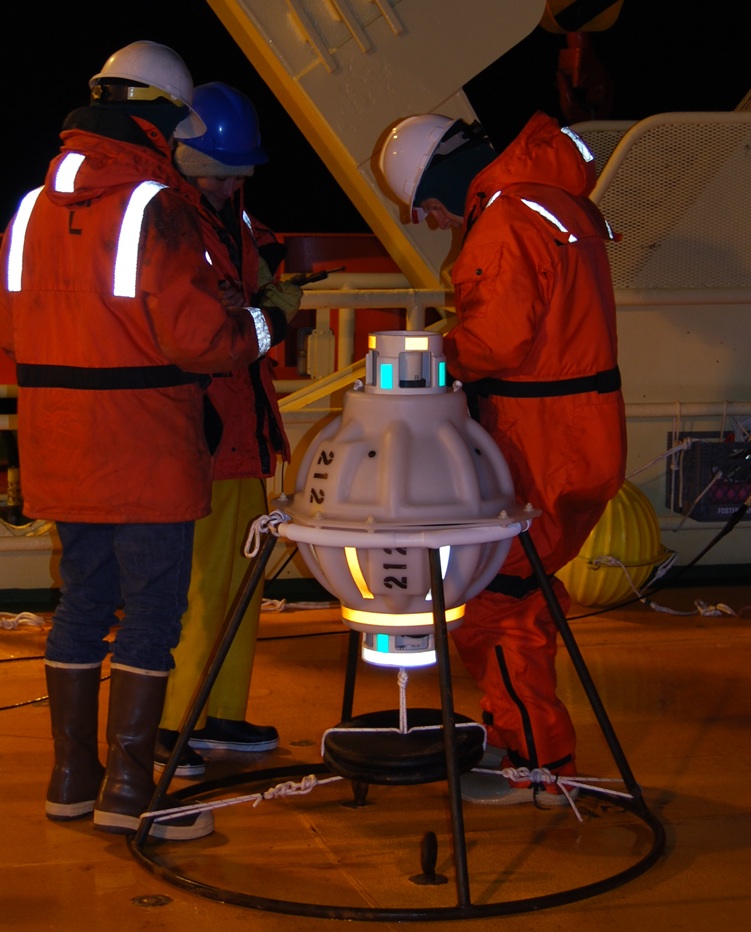 The inverted echo sounder (IES) measures acoustic echo time (τ) from the sea bed
to the sea surface. The "CPIES" is an IES with added sensors to measure both
current (tethered 50 m above the sea floor to avoid the bottom boundary layer) and bottom pressure. The instruments sample hourly and have telemetry
systems that enable us to download data to a
computer on a nearby ship.
The inverted echo sounder (IES) measures acoustic echo time (τ) from the sea bed
to the sea surface. The "CPIES" is an IES with added sensors to measure both
current (tethered 50 m above the sea floor to avoid the bottom boundary layer) and bottom pressure. The instruments sample hourly and have telemetry
systems that enable us to download data to a
computer on a nearby ship.
In strong-current regions of the global ocean, the IES vertical acoustic echo time measurements have been used to estimate, with remarkable accuracy, entire profiles of temperature T(p) and specific-volume anomaly δ(p) (or equivalently density ρ(p)). From hydrographic data, two-dimensional τ-parameterizations of these fields, TG(τ,p) and δG(τ,p), can be computed. We call each of these a "gravest empirical mode" (GEM) representation of the vertical structure. IES measurements of τ, combined with the GEM interpretation, produce estimated T(p) and δ(p) time series at each site. Time-series profiles of geopotential thickness, φ(p) = ∫0p δ(p')dp', can then be estimated above each IES. Pairs of IESs give φ(p) lateral differences, which, through geostropy, determine profiles of average baroclinic shear between the two sites (normal to the sites' separation vector). An L-shaped group of three IESs determines estimates of both velocity components. A 2-D array of appropriately spaced IESs can map out the 3-D structure of the horizontal velocity field. Additionally, the deep pressure and current measurements provide referencing to make the velocity profiles absolute.